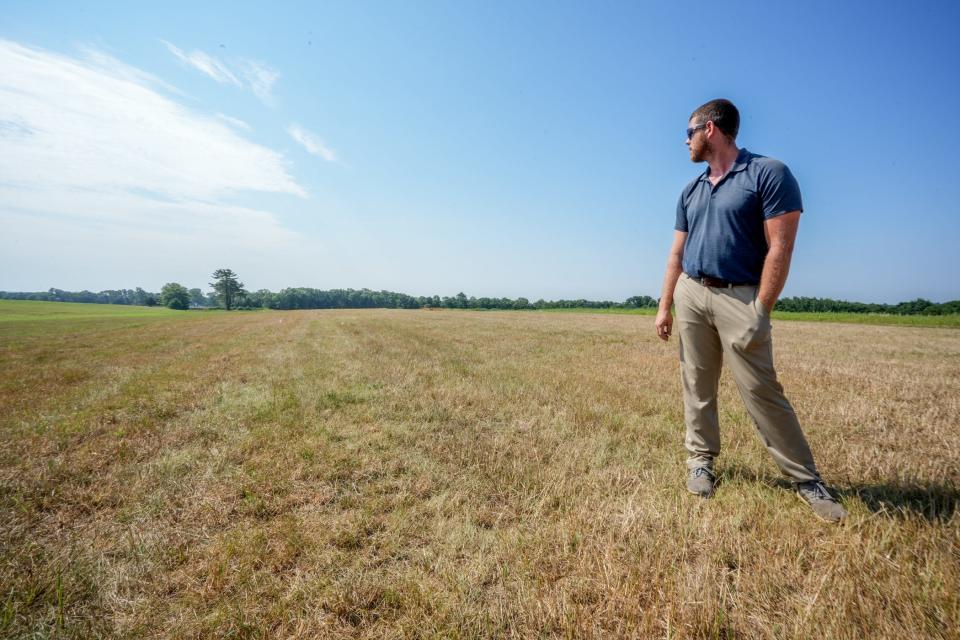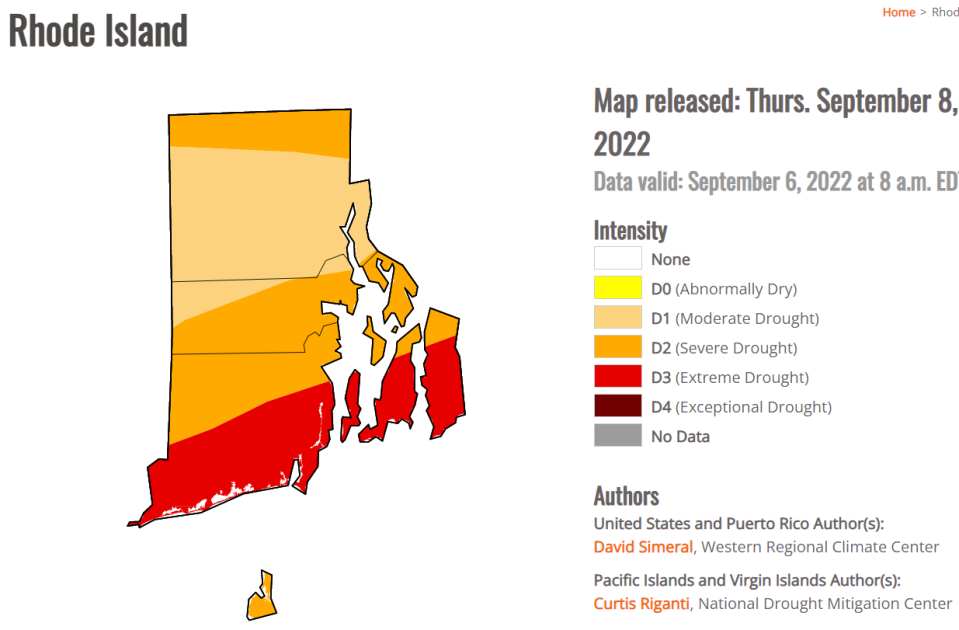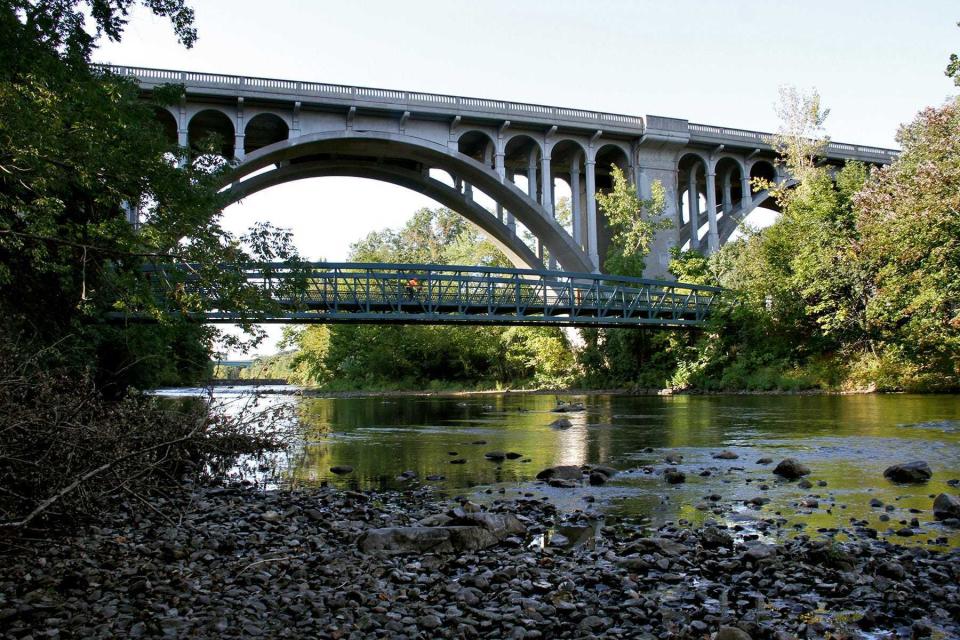Rhode Island drought lingers, but improves in places after Labor Day rain
PROVIDENCE – Monday’s record-breaking deluge has not erased a two-month-long drought that has turned hay fields into dust and damaged the last crop of corn.
The U.S. Drought Monitor reported Thursday that the southern portion of Rhode Island remains in a extreme drought, the mid-section is in a severe drought and northern section is in a moderate drought. That’s an improvement from a month ago, when nearly the entire state was in a severe drought.
Monday’s storm, which flooded Route 95 in Providence for hours, dumped as much as 11 inches of rain along a narrow corridor that ran from Scituate through East Providence but left the rest of the state with modest precipitation.

When the state’s drought advisory committee meets Tuesday, it will update the existing conservation recommendations and rate the drought.
Read More: How much rain did Rhode Island get? Here is the breakdown by community
Although some farmers had been praying for a tropical storm, much of the rain from Monday’s storm ended up in Narragansett Bay because the soil was so hard it couldn’t absorb the rainfall, according to Ken Ayars, chief of the Division of Agriculture for the state Department of Environmental Management.

“We are not immediately having a recharging effect,” he said Thursday. “The recharging depends on where the rain falls and its intensity. A longer-term, shallower rain event is ideal.”
In late July, farmers in southern Rhode Island were looking out over fields of stubble where hay once flourished. Some were asking for federal emergency relief as irrigation ponds dried up and the cost of diesel skyrocketed.
The last time the committee issued a statewide drought advisory was September 2020.

Ayars said he hasn’t heard of any farmers going under, adding that Rhode Island’s agricultural base has become increasingly diversified over the past couple of decades, making them less likely to depend on a single crop.
Monday’s storm is a cautionary tale.
“We were talking about a drought for two months and then we get an 11-inch rain event,” Ayars said. “This is an almost unprecedented weather pattern, and climate change is no doubt a part of that. It boils down to the resilience factor and individual farms.
What caused the Labor Day floods?: Too much rain too fast: Why I-95 drains were unable to handle Monday's historic storms
“What can we do to understand the reality of climate change and help our growers to be as ready as possible? That’s the question that’s before us. How do we prepare and adapt.”
Linda Borg covers education for The Journal.
This article originally appeared on The Providence Journal: Drought in Rhode Island still extreme in places after rainstorm

